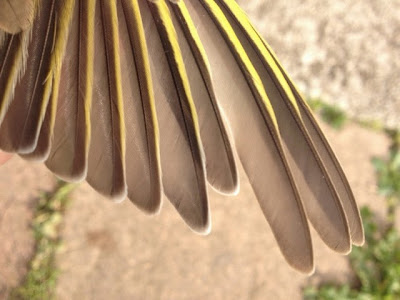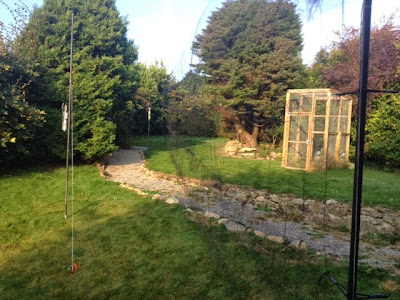 |
| The difference in the colouration of the moulted/unmoulted feathers is obvious here |
This same pattern of moult is seen in several other finch species, including Goldfinch, Siskin and, rarely, Linnet. Two Goldfinches bizarrely caught at the same time today also showed this same moult pattern ,but had already finished moulting. So whilst they didn't have any obvious growing feathers, the contrast in the two ages of feather is still obvious enough. Both birds had just moulted two primaries in the centre of the feather tract.
 |
| Note the difference in the base colour of the feathers and also the degree of wear on the white tips of the new feathers and those inside them |
Interestingly though, we did also catch a Goldfinch that was just finishing a complete moult, having moulted all flight feathers (primaries AND secondaries), primary coverts (seemingly) and tail. We know this was a first-year bird, as it was ringed as a 3J (complete juvenile) on 26th May. This is a much rarer pattern of moult, but unfortunately we don't have any photos of this bird!
Apart from garden ringing, we've also been helping out a Masters student at University of Exeter, helping to fit PIT tags (transponders) to Blue and Great Tits. This is part of a study looking at the effects of supplementary feeding on fitness in birds. PIT tags allow birds to be recorded remotely at feeders, checking themselves in and out of a feeding aviary as they pass through an aerial.
 |
| Although it looks clunky, the PIT tag on the right leg (on the left here) is very light, and acts like a bard code which scans as the bird enters the aviary. |




No comments:
Post a Comment